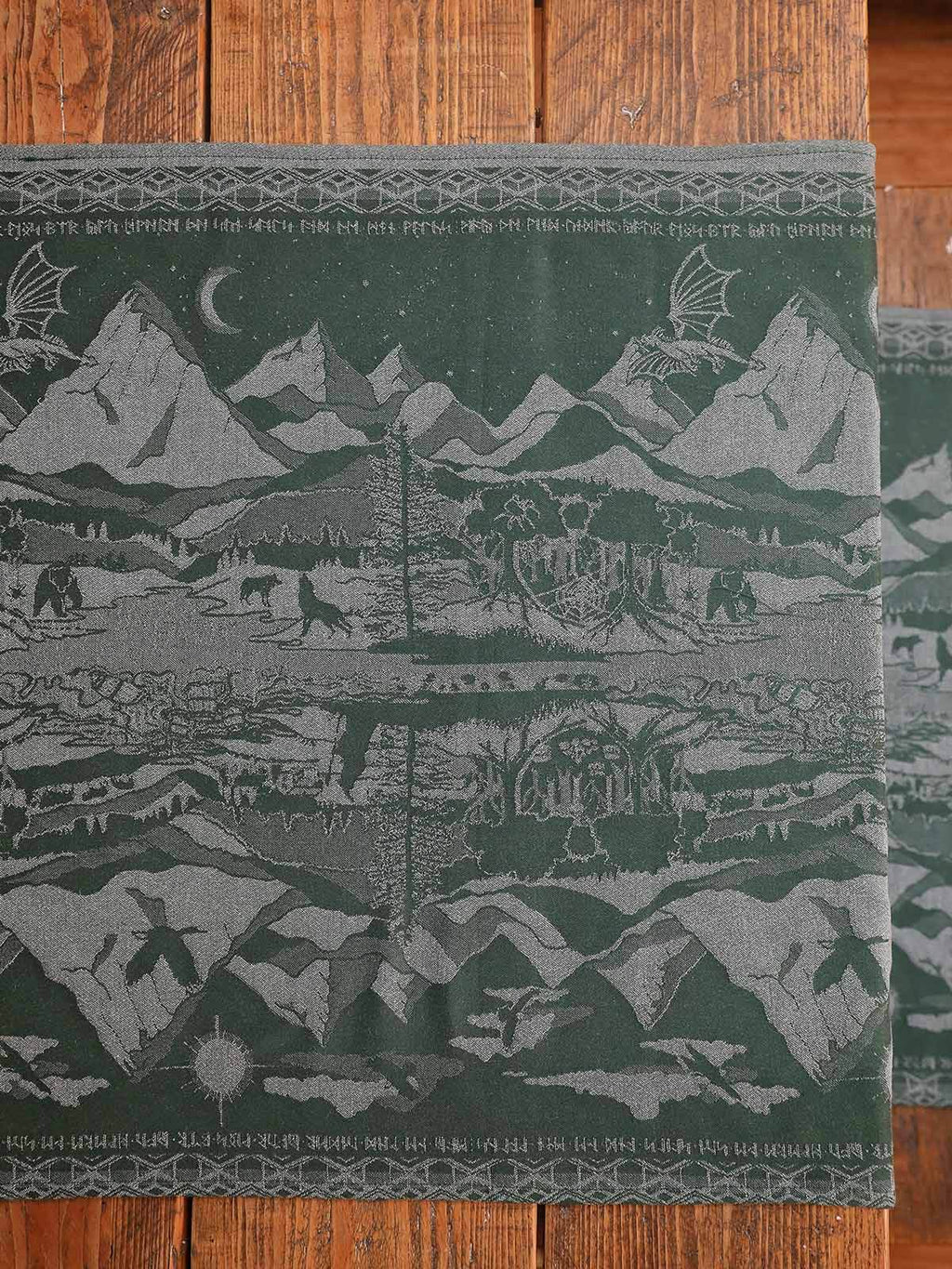
Capercaillie Design Development
The newest Oscha pattern features an iconic Scottish ground bird with a distinct call and shape; the capercaillie, also known as 'cock-of-the-woods'. We love to celebrate our native species, flora and fauna and hope to bring awareness to the habitat issues facing this beautiful bird, which is currently on the red list for endangered species. Read on to learn more about the development of this special pattern.

The design is inspired by the Art Nouveau style, particularly William Morris. Below you can see an original moodboard that guided its conception.

A sketch was initially made to make the most of the distinctive outline of the bird, including its fan of tail feathers in full display, and the outline depicting the bright red spot above the eye, known as the 'rose'. Stylised shaping of the feathers and surrounding foliage were also added to draw on the artistic style being incorporated.

This was then put into repeat to see how it would work on a baby sling.

At this point the work of translating it into digital format and perfecting the elements began, including developing the pattern of the feathers. Mid-tones were also added where different weave structures would later be used to create these shaded effects.

A few more tweaks were made to fill some of the empty space, some of the shading was changed and veins were added to the leaves.

The initial release of the design on woven baby sling fabric was specially planned to go on our deep pine coloured warp as we thought it would be very fitting. We used a gold weft in hemp to accompany it and bring out a lovely shimmer.


The capercaillie, despite having already recovered from extermination in Scotland due to over-hunting (with the help of its Swedish relatives), is once again facing extinction.
Its only habitat is pinewoods where there are many issues, such as deer fencing (which low flying birds fly into), the 'edge effect', leading to increased predators, and habitat reduction. Some good news is that the issue is being monitored this time and organisations such as Trees for Life (whom we are proud to support) are taking steps to create habitats for our native species.
Shop All Our Baby Wraps

Best Baby Carrier For Newborns 2025

Grey Havens: Oscha Lord of the Rings Design Development

Can Baby Carriers Cause Back Pain?

The co-founder of Oscha & twin mum of 3, Zoe is a seasoned babywearer and is passionate about all things baby carriers and Middle-earth!








 https://oschaslings.com
https://oschaslings.com